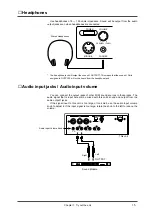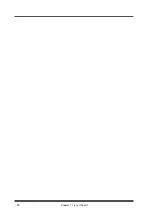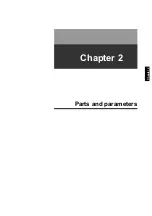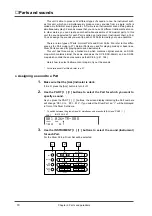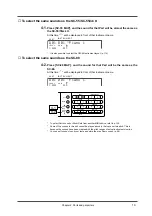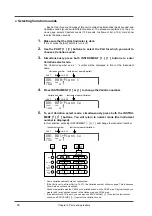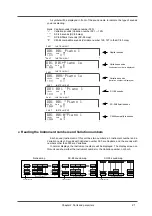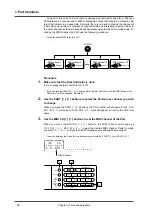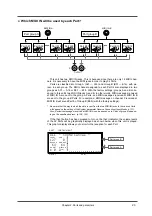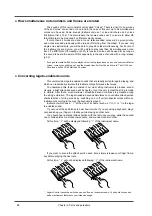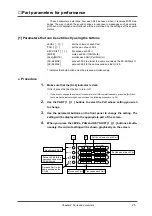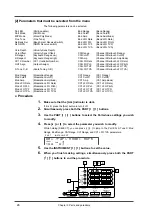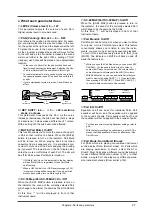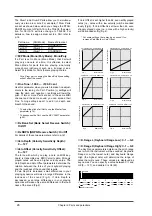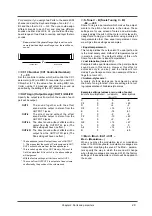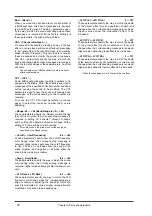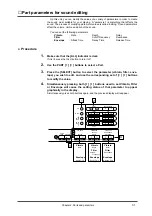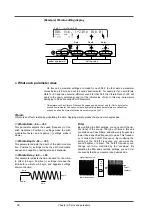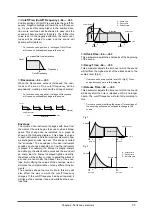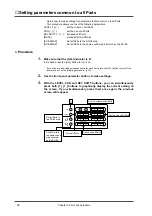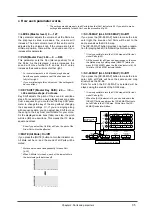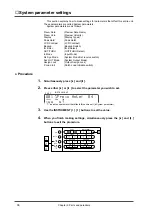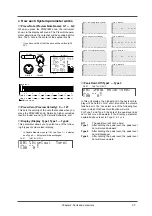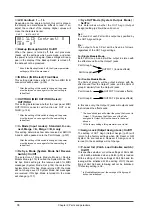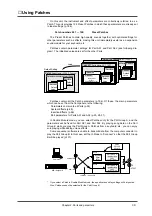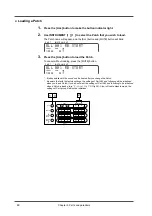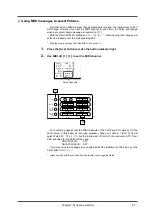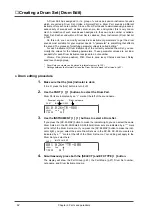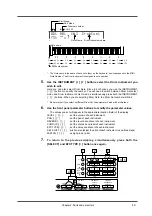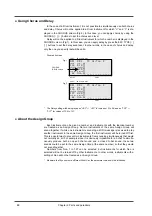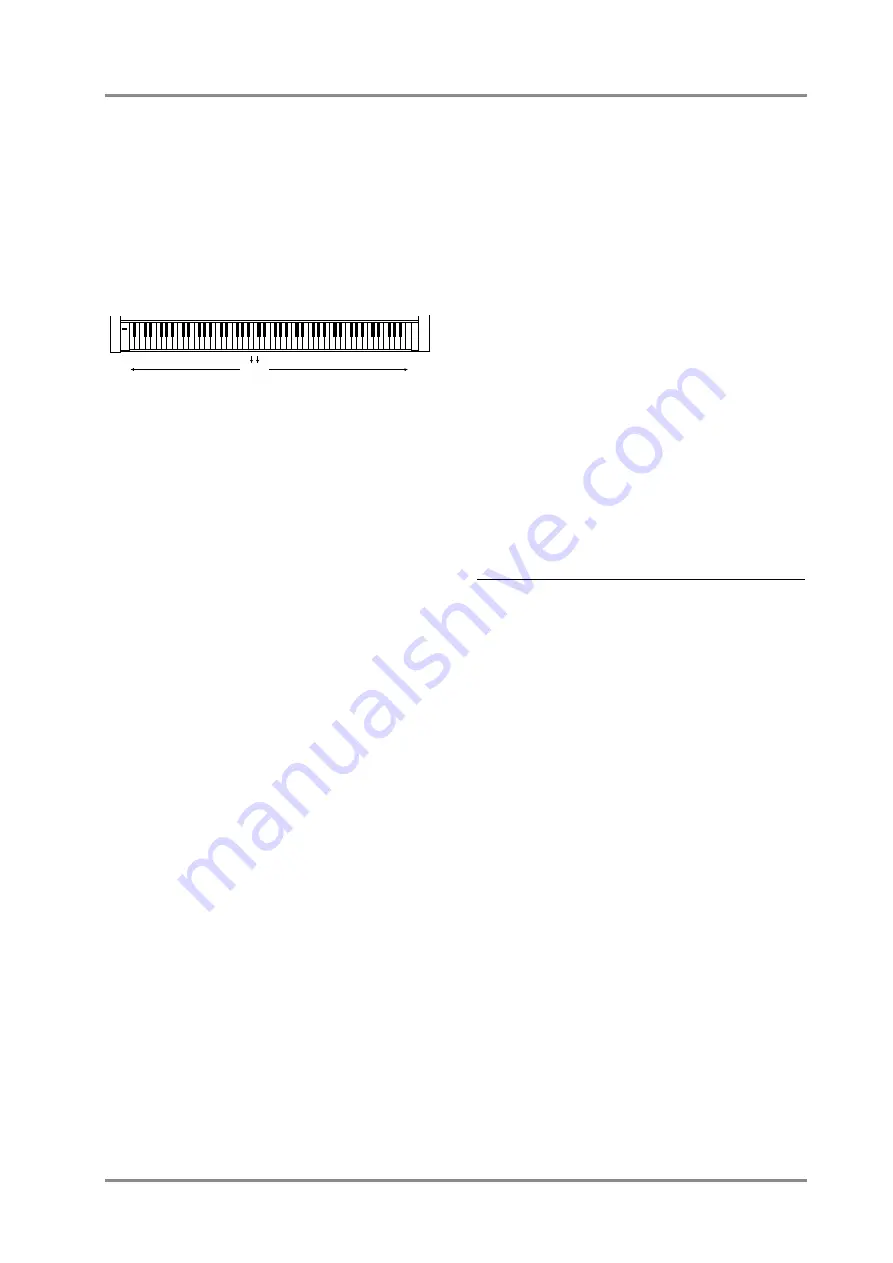
For example, if you assign two Parts to the same MIDI
channel and set the Keyboard Range of one to C-1 —
B3 and the other to C4 — G9. Then you could assign
different sounds to each Part, and play two different
sounds on either side of C4. Or, you could set the key-
board ranges of two Parts to overlap, and layer the two
sounds.
* Be aware that if Keyboard Range High is set to a note
name lower than Keyboard Range Low, there will be no
sound.
❍
CC1 C.Number (CC1 Controller Number):
1 — 95
Set the controller number which will control the CC1
parameter (p.30) via MIDI. For example if you set CC1
C.Number to 16, the value of an incoming MIDI con-
troller number 16 message will affect the sound as
specified by the setting of the CC1 parameter.
❍
OUT Asgn (Output Assign): OUT-1/2/2L/2R
Specify the output jack from which the sound of each
part will be output.
OUT-1
The sound together with the effect
sound will be output in stereo from the
OUTPUT 1 jacks.
OUT-2
The direct sound without the effect
sound will be output in stereo from the
OUTPUT 2 jacks.
OUT-2L
The direct sound without effects will be
output from the OUTPUT 2L jack. (The
Pan setting will have no effect.)
OUT-2R
The direct sound without effects will be
output from the OUTPUT 2R jack. (The
Pan setting will have no effect.)
* The headphone jack will output the sound of OUTPUT
1. This means that the sound of Parts assigned to OUT-
PUT 2 will not be heard from the headphone jack.
* This is valid only when Sys. OUT Mode (p.38) is set to
Sel. Be aware that if it is set to Fix, the above settings
will be ignored.
* With the factory settings, all Parts are set to OUT-1.
* The sound from OUTPUT 2 is output at a fixed volume,
unaffected by the position of the volume knob.
❍
S.Tune C - B (Scale Tuning C - B):
-64 — +63
Scale Tuning is a parameter which makes fine adjust-
ments to the pitch of each note in the octave. These
settings are for one octave of notes, and will simulta-
neously adjust the pitch of that note in all octaves. By
using Scale Tuning, you can perform using a variety of
temperaments other than equal temperament. Here
we will give three settings as examples.
< Equal temperament >
This tuning divides the octave into 12 equal parts, and
is the most widely used method of temperament used
in western music. The default setting of this unit's
Scale Tune function is Equal Temperament.
< Just intonation (tonic of C) >
Compared with equal temperament, the principle triads
sound pure in this tuning. However this effect is
achieved only in one key, and the triads will turn
muddy if you transpose. Here is an example of the set-
tings for a tonic of C.
< Arabian-style scale >
A variety of ethnic tunings can be achieved by using
the Scale Tuning function. Here are settings for a tun-
ing representative of Arabian-style scales
Example settings (values are in units of cents)
Note name Equal temperament
Just intonation
Arabian-style scale
(tonic of C)
C
0
0
-6
C#
0
-8
+45
D
0
+4
-2
D#
0
+16
-12
E
0
-14
-51
F
0
-2
-8
F#
0
-10
+43
G
0
+2
-4
G#
0
+14
+47
A
0
-16
0
A#
0
+14
-10
B
0
-12
-49
❍
Mod ~/Bnd ~/CAf ~/CC1 ~
Mod ~ (Modulation ~ )
When you move the modulation lever or modulation
wheel of a MIDI keyboard, modulation messages are
transmitted, modifying the sound. The Mod ~ parame-
ters specify the way in which the sound will change
when these messages are received. With the factory
settings of these parameters, vibrato will be applied to
the sound.
C4
B3
Instrument 1
Instrument 2
Chapter 2. Parts and paramters
29
Summary of Contents for SoundCanvas SC-88 Pro
Page 9: ...Chapter 1 Try out the unit Quick start Chapter 1...
Page 18: ...Chapter 1 Try out the unit 16...
Page 19: ...Chapter 2 Parts and parameters Chapter 2...
Page 47: ...Chapter 3 System Effects Chapter 3...
Page 57: ...Chapter 4 Insertion Effects Chapter 4...
Page 97: ...Chapter 5 Convenient functions Chapter 5...
Page 121: ...Chapter 6 Using the unit with a personal computer Chapter 6...

